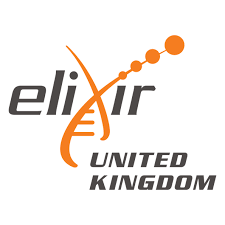Phospholipase A2 C
Unless otherwise stated all data on this page refer to the human proteins. Gene information is provided for human (Hs), mouse (Mm) and rat (Rn).
Overview
Phospholipase A2 (PLA2, EC 3.1.1.4) cleaves the sn-2 fatty acid of phospholipids, primarily phosphatidylcholine, to generate lysophosphatidylcholine and arachidonic acid. Most commonly-used inhibitors (e.g. bromoenol lactone, arachidonyl trifluoromethyl ketone or methyl arachidonyl fluorophosphonate) are either non-selective within the family of phospholipase A2 enzymes or have activity against other eicosanoid-metabolising enzymes.
Secreted or extracellular forms: sPLA2-1B, sPLA2-2A, sPLA2-2D, sPLA2-2E, sPLA2-2F, sPLA2-3, sPLA2-10 and sPLA2-12A
Cytosolic, calcium-dependent forms: cPLA2-4A, cPLA2-4B, cPLA2-4C, cPLA2-4D, cPLA2-4E and cPLA2-4F
Other forms: PLA2-G5, iPLA2-G6, PLA2-G7 and PAFAH2 (platelet-activating factor acetylhydrolase 2)
Enzymes
1426|
sPLA2-1B
C
Show summary »
More detailed page |
||||||||||||||||
|
sPLA2-2A
Show summary »
More detailed page |
||||||||||||||||
|
sPLA2-2D C Show summary » |
||||||||||||||||
|
sPLA2-2E C Show summary » |
||||||||||||||||
|
sPLA2-2F C Show summary » |
||||||||||||||||
|
sPLA2-3 C Show summary » |
||||||||||||||||
|
cPLA2-4A
C
Show summary »
More detailed page |
||||||||||||||||
|
cPLA2-4B C Show summary » |
||||||||||||||||
|
cPLA2-4C C Show summary »
|
||||||||||||||||
|
cPLA2-4D C Show summary » |
||||||||||||||||
|
cPLA2-4E C Show summary » |
||||||||||||||||
|
cPLA2-4F C Show summary » |
||||||||||||||||
|
PLA2-G5 C Show summary » |
||||||||||||||||
|
iPLA2-G6 C Show summary » |
||||||||||||||||
|
PLA2-G7
Show summary »
More detailed page |
||||||||||||||||
|
sPLA2-10 C Show summary » |
||||||||||||||||
|
sPLA2-12A C Show summary » |
||||||||||||||||
|
platelet activating factor acetylhydrolase 2 C Show summary » |
Comments
Further reading
How to cite this family page
Database page citation:
Phospholipase A2. Accessed on 01/11/2024. IUPHAR/BPS Guide to PHARMACOLOGY, http://www.guidetopharmacology.org/GRAC/FamilyDisplayForward?familyId=275.
Concise Guide to PHARMACOLOGY citation:
Alexander SPH, Fabbro D, Kelly E, Mathie AA, Peters JA, Veale EL, Armstrong JF, Faccenda E, Harding SD, Davies JA et al. (2023) The Concise Guide to PHARMACOLOGY 2023/24: Enzymes. Br J Pharmacol. 180 Suppl 2:S289-373.









The sequence of PLA2-2C suggests a lack of catalytic activity, while PLA2-12B (GXIIB, GXIII sPLA2-like) appears to be catalytically inactive [7]. A further fragment has been identified with sequence similarities to Group II PLA2 members. Otoconin 90 (OC90) shows sequence homology to PLA2-G10.
A binding protein for secretory phospholipase A2 has been identified which shows modest selectivity for sPLA2-1B over sPLA2-2A, and also binds snake toxin phospholipase A2 [1]. The binding protein appears to have clearance function for circulating secretory phospholipase A2, as well as signalling functions, and is a candidate antigen for idiopathic membraneous nephropathy [2].
PLA2-G7 and PAFAH2 also express platelet-activating factor acetylhydrolase activity (EC 3.1.1.47).